Popular categories
Looking for a yarn?

100% Cotton
from 1.10 £ /50g
Order DROPS Needles & Hooks
Clicking the ORDER button will redirect you to Wool Warehouse Direct Ltd website
The yarn cost is calculated from the pattern’s smallest size and the yarn’s cheapest product type. Looking for an even better price? You might find it on the DROPS Deals!
Sunny Day Top
Knitted DROPS top with V-neck, lace pattern and vents in the sides in ”Paris”. Size: S - XXXL.
DROPS design: Pattern no w-592
Yarn group C or A + A
----------------------------------------------------------
Size: S - M - L - XL - XXL - XXXL
Materials:
DROPS PARIS from Garnstudio
350-400-450-450-500-550 g colour no 16, white
DROPS POINTED NEEDLES SIZE 5 mm - or size needed to get 17 sts x 22 rows in stocking st = 10 x 10 cm.
DROPS CIRCULAR NEEDLE SIZE 4 mm – for edge in garter st.
-------------------------------------------------------
Alternative Yarn – See how to change yarns here
Yarn Groups A to F – Use the same pattern and change the yarn here
Yarn usage using an alternative yarn – Use our yarn converter here
-------------------------------------------------------

100% Cotton
from 1.10 £ /50g
Order DROPS Needles & Hooks
Clicking the ORDER button will redirect you to Wool Warehouse Direct Ltd website
The yarn cost is calculated from the pattern’s smallest size and the yarn’s cheapest product type. Looking for an even better price? You might find it on the DROPS Deals!
- English (UK/cm)
- Česky - not translated
- Dansk
- Deutsch
- Eesti keel
- English (US/in)
- Español
- Français
- Íslenska
- Italiano
- Magyar
- Nederlands
- Norsk
- Polski
- Português
- Suomi
- Svenska
- English (UK/cm), Bulgaria
- English (UK/cm), Croatia
- English (UK/cm), Greece
- English (UK/cm), Latvia
- English (UK/cm), Lithuania
- English (UK/cm), Romania
- English (UK/cm), Slovenia
- Česky, Slovakia - not translated
Pattern instructions
K all rows. 1 ridge = 2 rows K.
PATTERN:
See diagrams A.1 and A.2. The diagrams show all rows in pattern seen from RS.
DECREASE TIP (applies to sides on body, at armholes and neck):
Dec inside 2 edge sts in garter st on front and back piece and inside 3 edge sts in garter st along armholes and neck. All dec are done from RS!
Dec as follows after 2 or 3 edge sts: Slip 1 st as if to K, K 1, psso.
Dec as follows before 2 or 3 edge sts: Beg 2 sts before edge sts and K 2 tog.
----------------------------------------------------------
TOP:
Piece is worked bottom up in two parts.
BACK PIECE:
Cast on 75-85-91-101-111-123 sts on needle size 4 mm with Paris. Work 2 ridges in GARTER ST - see explanation above. Insert 1 marker after the first 37-42-45-50-55-61 sts on needle (seen from RS) = 38-43-46-51-56-62 sts on needle after marker, move the marker upwards when working. Switch to needle size 5 mm and work in stocking st with 2 edge sts in garter st in each side. REMEMBER THE KNITTING TENSION When piece measures 12 cm, dec 1 st in each side - READ DECREASE TIP! Repeat dec every 8-8-7-7-7-7 cm a total of 4-4-5-5-5-5 times in each side = 67-77-81-91-101-113 sts. AT THE SAME TIME when piece measures 15-16-17-14-15-16 cm, work pattern according to diagram A.1 over the middle sts – pattern beg from RS after marker in the middle of piece (see arrow in diagram) – work the other sts as before. When A.1 has been worked 1 time in height continue the pattern towards the edge st in each side as before - adjust to a whole or half heart - see A.1A and A.1B, (work A.1A in the right side of work and work A.1B in the left side of work), inside edge st in each side. Work the sts that do not fit a whole or half heart out towards the sides in stocking st. When piece measures 43-44-45-46-47-48 cm, work 2 ridges over the outermost 5-7-8-9-10-11 sts in each side (work the other sts as before). Then cast off the first 2-4-5-6-7-8 sts at beg of the next 2 rows for armholes. Continue pattern with 3 edge sts in garter st in each side (where there is not enough room for a whole or half heart out towards armholes work these sts in stocking st). AT THE SAME TIME dec for armholes inside edge st on every other row (i.e. every row from RS) as follows: Dec 1 st 1-4-4-7-10-14 times in total – READ DECREASE TIP = 61-61-63-65-67-69 sts remain on needle. When piece measures 52-54-56-58-60-62 cm, work 2 ridges over the middle 29-29-31-31-33-33 sts on needle (work the other sts as before). On next row from RS, cast off the middle 23-23-25-25-27-27 sts for neck and finish each shoulder separately. Continue as before with 3 edge sts in garter st in each side. AT THE SAME TIME dec for neck on every other row as follows: Dec 1 st 3 times in total – READ DECREASE TIP = 16-16-16-17-17-18 sts remain on shoulder. Continue until piece measures 60-62-64-66-68-70 cm and cast off. Repeat on the other shoulder.
FRONT PIECE:
READ ALL OF THE FOLLOWING SECTION BEFORE CONTINUING!
Cast on and work as on back piece until piece measures 35-37-38-39-40-42 cm - NOTE: Do not work A.1 on front piece. Now work pattern according to diagram A.2 over the middle sts – pattern beg from RS after marker in the middle of piece (see arrow in diagram) – work the other sts as before.
ARMHOLE: AT THE SAME TIME when piece measures 43-44-45-46-47-48 cm, work 2 ridges over the outermost 5-7-8-9-10-11 sts in each side as on back piece (work the other sts as before). Then dec for armhole in the side as on back piece.
V-NECK: AT THE SAME TIME when A.2 has been worked 1 time vertically work 2 ridges over the middle 9 sts mid front (work the other sts as before). On next row from RS after ridges, cast off the middle 3 sts for neck and finish each part separately. Continue in stocking st with dec for armhole as before and dec AT THE SAME TIME for V-neck on every other row (i.e. on every row from RS) as follows: Dec 1 st 13-13-14-14-15-15 times in total - READ DECREASE TIP.
After all dec for armholes and V-neck, 16-16-16-17-17-18 sts remain on shoulder. Continue until piece measures 60-62-64-66-68-70 cm and cast off. Repeat on the other shoulder - NOTE: Work first row from mid front (= WS). Beg by picking up 1 st in first st from the other side and work this tog with first st on needle. This is done to avoid a nick at the bottom of vent.
ASSEMBLY:
Sew shoulder seams inside cast-off edge. Sew side seams – sew edge to edge in outer loops of edge sts - beg at the top by armhole and sew until approx. 10 cm remain in each side (= vent).
Diagram

|
= K from RS, P from WS |

|
= 1 YO between 2 sts |

|
= K 2 tog |

|
= slip 1 st as if to K, K 1, psso |

|
= marker |
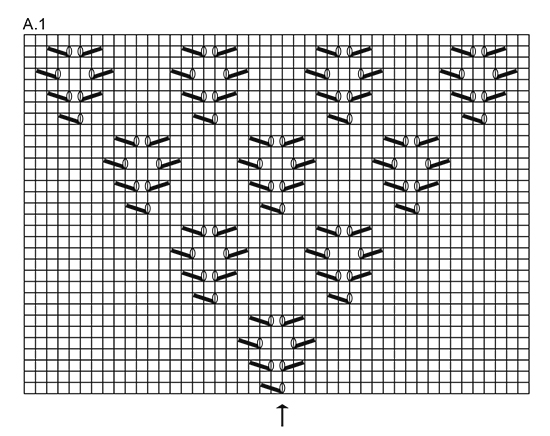
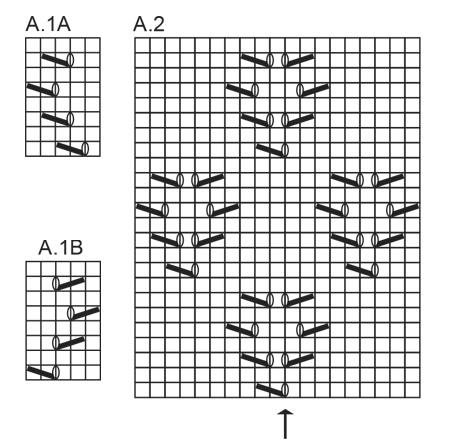
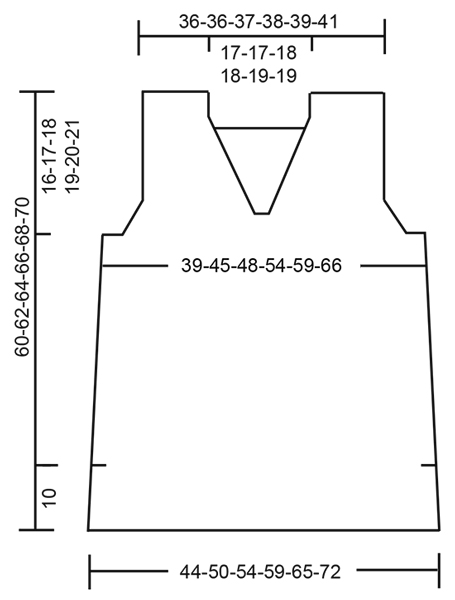
What can you do with our patterns? You can share DROPS patterns online, using the pattern original picture, materials, name and number. But you are NOT ALLOWED to reproduce the complete pattern digitally in any way. Yarn stores are welcome to use the DROPS pattern database to promote the sale of our assortment. You can print out our patterns, make as many copies as you’d like. The only thing we ask is that you don't make any changes / additions to the original printed document. And that the patterns according to the DROPS philosophy are given out to the consumers for free. Editorials that wish to publish our patterns in printed books or magazines can contact us for more information. The sale of garments based on DROPS patterns is permitted as long as they are sold as single items or per order. Further commercial use of the patterns is not permitted. It has to be clearly stated that the garment is made based on a design from DROPS DESIGN. The use of clothing labels of which DROPS DESIGN forms part is conditioned by the inclusion of the following text: “A DROPS DESIGN made by …..”. The use of DROPS photos for marketing purposes/sales is only permitted in connection with the use/sale of DROPS products. The photos may not be cut or edited and the logo should be clearly visible.
We reserve the right to withdraw the permission for use of our patterns at any time, notwithstanding the reason.
Each of our patterns has specific tutorial videos to help you.
These step-by-step tutorials might also help you:
Why is the knitting/crochet tension so important?
Knitting tension is what determines the final measurements of your work, and is usually measured per 10 x 10 cm. It is provided like so: number of stitches in width x number of rows in height - eg: 19 stitches x 26 rows = 10 x 10 cm.
The knitting tension is very individual; some people knit/crochet loosely while others work tightly. You adjust the knitting tension with the needle size, which is why the suggested needle size is only meant as a guide! You need to adjust this (up or down) to ensure that YOUR knitting tension matches the knitting tension provided in the pattern. If you work with a different knitting tension than provided you will have a different yarn consumption, and your work will have different measurements than what the pattern suggests.
The knitting tension also determines which yarns can replace each other. As long as you achieve the same knitting tension you can replace one yarn with another.
See DROPS lesson: How to measure your tension/gauge
See DROPS video: How to make a gauge tension swatch
How do I know how many balls of yarn I need?
The required amount of yarn is provided in grams, eg: 450 g. To calculate how many balls you’ll need you first need to know how many grams are in 1 ball (25g, 50g or 100g). This information is available if you click on the individual yarn quality on our pages. Divide the amount required with the amount of each ball. For example, if each ball is 50g (the most common amount), the calculation will be as follows: 450 / 50 = 9 balls.
Can I use a different yarn than what the pattern suggests?
The important thing when changing from one yarn to another is that the knitting/crochet tension remains the same. This is so that the measurements of the finished piece will be the same as on the sketch provided. It is easier to achieve the same knitting tension using yarns from the same yarn group. It is also possible to work with multiple strands of a thinner yarn to achieve the knitting tension of a thicker one. Please try our yarn converter. We recommend you to always work a test swatch.
Please NOTE: when changing yarn the garment might have a different look and feel to the garment in the photo, due to individual properties and qualities of each yarn.
See DROPS lesson: Can I use a different yarn than the one mentioned in the pattern?
What are the yarn groups?
All our yarns are categorised into yarn groups (from A to F) according to thickness and knitting tension – group A contains the thinnest yarns and group F the thickest. This makes it easier for you to find alternative yarns to our patterns, should you wish to switch yarn. All yarns within the same group have a similar knitting tension and can easily replace each other. However, different yarn qualities have different structures and properties which will give the finished work a unique look and feel.
How do I use the yarn calculator?
At the top of all our patterns you’ll find a link to our yarn calculator, which is a helpful tool should you wish to use a different yarn than suggested. By filling in the yarn quality you wish to replace, the amount (in your size) and number of strands, the calculator will present good alternative yarns with the same knitting tension. Additionally it will tell you how much you’ll require in the new qualities and whether you’ll need to work with multiple strands. Most skeins are 50g (some are 25g or 100g).
If the pattern is worked with multiple colours, every colour will have to be calculated separately. Similarly, if the pattern is worked with several strands of different yarns (for example 1 strand Alpaca and 1 strand Kid-Silk) you will have to find alternatives for each, individually.
Why do you show discontinued yarns in the patterns?
Since different yarns have different qualities and textures we have chosen to keep the original yarn in our patterns. However, you can easily find options among our available qualities by using our yarn calculator, or simply pick a yarn from the same yarn group.
It is possible that some retailers still have discontinued yarns in stock, or that someone has a few skeins at home that they would like to find patterns for.
The yarn calculator will provide both alternative yarn as well as required amount in the new quality.
What size should I knit?
If you think it's hard to decide what size to make, it can be a good idea to measure a garment you own already and like the size of. Then you can pick the size by comparing those measures with the ones available in the pattern's size chart.
You'll find the size chart at the bottom of the pattern.
See DROPS lesson: How to read size chart
Why do I get the wrong knitting tension with the suggested needle size?
The needle size provided in the pattern serves only as a guide, the important thing is to follow the knitting tension. And since knitting tension is very individual, you will have to adjust the needle size to ensure that YOUR tension is the same as in the pattern – maybe you’ll have to adjust 1, or even 2 needle sizes, up or down to achieve the correct tension. For this, we recommend that you work test swatches.
Should you work with a different knitting tension than the one provided, the measurements of the finished garment might deviate from the measurement sketch.
See DROPS lesson: How to measure your tension/gauge
See DROPS video: How to make a tension/gauge swatch
Why is the pattern worked top-down?
Working a garment top-down provides more flexibility and room for personal adjustment. For example it is easier to try the garment on while working, as well as making adjustments to length of yoke and shoulder caps.
The instructions are carefully explaining every step, in the correct order. Diagrams are adjusted to the knitting direction and are worked as usual.
How do I work according to a knitting diagram?
The diagram depicts all rows/rounds, and every stitch seen from the right side. It is read from bottom to top, from right to left. 1 square = 1 stitch.
When working back and forth, every other row is worked from the right side and every other row is worked from the wrong side. When working from the wrong side, the diagram will have to be worked reversed: from left to right, knit stitches are purled, purl stitches are knit etc.
When working in the round every round is worked from the right side and the diagram are worked from right to left on all rounds.
See DROPS lesson: How to read knitting diagrams
How do I work according to a crochet diagram?
The diagram depicts all rows/rounds, and every stitch seen from the right side. It is worked from bottom to top, from right to left.
When working back and forth every other row is worked from the right side: from right to left and every other row is worked from the wrong side: from left to right.
When working in the round, every row in the diagram are worked from the right side, from right to left.
When working a circular diagram you start in the middle and work your way outwards, counter clockwise, row by row.
The rows usually start with a given number of chain stitches (equivalent to the height of the following stitch), this will either be depicted in the diagram or explained in the pattern.
See DROPS lesson: How to read crochet diagrams
How do I work several diagrams simultaneously on the same row/round?
Instructions for working several diagrams after each other on the same row/round, will often be written like so: “work A.1, A.2, A.3 a total of 0-0-2-3-4 times". This means you work A.1 once, then A.2 is worked once, and A.3 is repeated (in width) the number of times provided for your size – in this case like so: S = 0 times, M = 0 times, L=2 times, XL= 3 times and XXL = 4 times.
The diagrams are worked as usual: begin with the first row in A.1, then work the first row in A.2 etc.
See DROPS lesson: How to read knitting diagrams
See DROPS lesson: How to read crochet diagrams
Why are the sleeves shorter in larger sizes?
The total width of the garment (from wrist-to-wrist) will be larger in the larger sizes, despite the actual sleeves being shorter. The larger sizes have longer sleeve caps and wider shoulders, so there will be a good fit in all sizes.
Where on the garment is the length measured?
The measurement sketch/schematic drawing provides information regarding the full length of the garment. If it’s a jumper or a jacket the length is measured from the highest point on the shoulder closest to the neckline, and straight down to the bottom of the garment. It is NOT measured from the tip of shoulder. Similarly, the length of yoke is measured from the highest point on the shoulder and down to where yoke is split into body and sleeves.
On a jacket measures are never taken along bands, unless specifically stated. Always measure inside band stitches when measuring the length.
See DROPS lesson: How to read a schematic drawing
What is a repeat?
Diagrams are often repeated on the round or in height. 1 repeat is the diagram the way it appears in the pattern. If it says to work 5 repeats of A.1 in the round, then you work A.1 a total of 5 times after/next to each other in the round. If it says to work 2 repeats of A.1 vertically/in height you work the entire diagram once, then begin again at the start and work the entire diagram one more time.
Why does the piece start with more chain stitches than it’s worked with?
Chain stitches are slightly narrower than other stitches and to avoid working the cast-on edge too tight, we simply chain more stitches to begin with. The stitch count will be adjusted on the following row to fit the pattern and measurement sketch.
Why increase before the rib edge when the piece is worked top-down?
The rib edge is more elastic and will contract slightly compared to, for example, stocking stitch. By increasing before the rib edge, you avoid a visible difference in width between the rib edge and the rest of the body.
Why increase in the cast-off edge?
It’s very easy to cast off too tightly, and by making yarn overs while casting off (and simultaneously casting these off) you avoid a too tight cast off edge.
See DROPS video: How to bind off with yarn overs (yo)
How do I increase/decrease on every 3rd and 4th row/round alternately?
To achieve an even increase (or decrease) you can increase on, for example: every 3rd and 4th row alternately, like so: work 2 rows and increase on the 3rd row, work 3 rows and increase on the 4th. Repeat this until the increase is complete.
See DROPS lesson: Increase or decrease 1 st on every 3rd and 4th row alternately
How can I work a jacket in the round instead of back and forth?
Should you prefer to work in the round instead of back and forth, you may of course adjust the pattern. You’ll need to add steeks mid-front (usually 5 stitches), and follow the instructions. When you would normally turn and work from the wrong side, simply work across the steek and continue in the round. At the end you’ll cut the piece open, pick up stitches to work bands, and cover the cut edges.
See DROPS video: How to knit steeks and cut open
Can I work a jumper back and forth instead of in the round?
Should you prefer to work back and forth instead of in the round, you may of course adjust the pattern so you work the pieces separately and then assemble them at the end. Divide the stitches for the body in 2, add 1 edge stitch in each side (for sewing) and work the front and back pieces separately.
See DROPS lesson: Can I adapt a pattern for circular needles into straight needles?
Why is the pattern slightly different than what I see in the photo?
Pattern repeats can vary slightly in the different sizes, in order to get the correct proportions. If you’re not working the exact same size as the garment in the photo, yours might deviate slightly. This has been carefully developed and adjusted so that the complete impression of the garment is the same in all sizes.
Make sure to follow instructions and diagrams for your size!
How do I make a women’s size garment into a men’s size one?
If you have found a pattern you like which is available in women’s size it’s not very difficult to convert it to men’s size. The biggest difference will be the length of sleeves and body. Start working on the women size that you think would fit across the chest. The additional length will be worked right before you cast off for the armhole/sleeve cap. If the pattern is worked top-down you can add the length right after the armhole or before the first decrease on sleeve.
Regarding additional yarn amount, this will depend on how much length you add, but it is better with a skein too many than too few.
How do I prevent a hairy garment from shedding?
All yarns will have excess fibres (from production) that might come off as lint or shedding. Brushed yarns (ie hairier yarns) have more of these loose, excess fibres, causing more shedding.
Shedding also depends on what is worn under or over the garment, and whether this pulls at the yarn fibres. It’s therefore not possible to guarantee that there will be no shedding
Below are some tips on how to get the best result when working with hairier yarns:
1. When the garment is finished (before you wash it) shake it vigorously so the looser hairs come off. NOTE: do NOT use a lint roller, brush or any method that pulls at the yarn.
2. Place the garment in a plastic bag and put it in your freezer - the temperature will cause the fibres to become less attached to each other, and excess fibres will come off easier.
3. Leave in the freezer for a few hours before taking it out and shaking it again.
4. Wash the garment according to the instructions on the yarn label.
Why does my garment pill?
Pilling is a natural process that happens to even the most exclusive of fibers. It's a natural sign of wear and tear that is hard to avoid, and that is most visible in high friction areas of your garment like a sweater's arms and cuffs.
You can make your garment look as new by removing the pilling, using a fabric comb or a pill/lint remover.
In the meantime, you can read the questions and answers that others have left to this pattern or join the DROPS Workshop on Facebook to get help from fellow knitters/crocheters!
You might also like...
Sunny Day Top
Sunny Day Top by Drops Design
Sunny Day Top |
||||||||||||||||
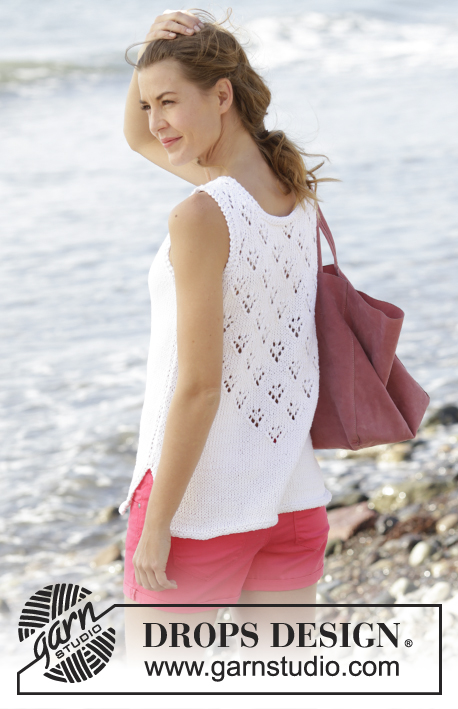 |
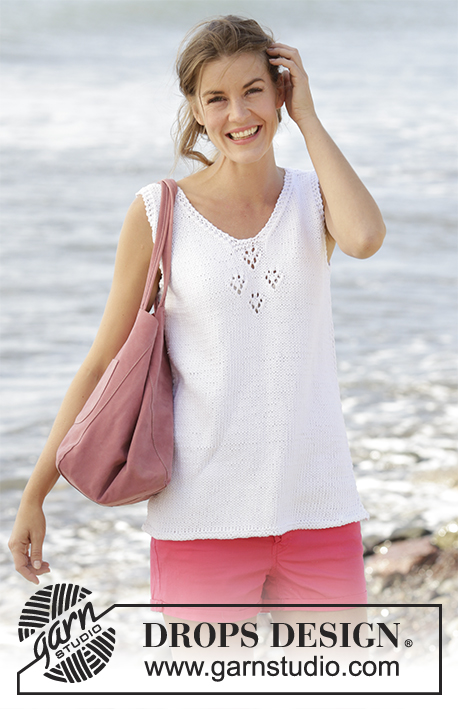 |
|||||||||||||||
Knitted DROPS top with V-neck, lace pattern and vents in the sides in ”Paris”. Size: S - XXXL.
DROPS 170-32 |
||||||||||||||||
|
GARTER ST (back and forth): K all rows. 1 ridge = 2 rows K. PATTERN: See diagrams A.1 and A.2. The diagrams show all rows in pattern seen from RS. DECREASE TIP (applies to sides on body, at armholes and neck): Dec inside 2 edge sts in garter st on front and back piece and inside 3 edge sts in garter st along armholes and neck. All dec are done from RS! Dec as follows after 2 or 3 edge sts: Slip 1 st as if to K, K 1, psso. Dec as follows before 2 or 3 edge sts: Beg 2 sts before edge sts and K 2 tog. ---------------------------------------------------------- TOP: Piece is worked bottom up in two parts. BACK PIECE: Cast on 75-85-91-101-111-123 sts on needle size 4 mm with Paris. Work 2 ridges in GARTER ST - see explanation above. Insert 1 marker after the first 37-42-45-50-55-61 sts on needle (seen from RS) = 38-43-46-51-56-62 sts on needle after marker, move the marker upwards when working. Switch to needle size 5 mm and work in stocking st with 2 edge sts in garter st in each side. REMEMBER THE KNITTING TENSION When piece measures 12 cm, dec 1 st in each side - READ DECREASE TIP! Repeat dec every 8-8-7-7-7-7 cm a total of 4-4-5-5-5-5 times in each side = 67-77-81-91-101-113 sts. AT THE SAME TIME when piece measures 15-16-17-14-15-16 cm, work pattern according to diagram A.1 over the middle sts – pattern beg from RS after marker in the middle of piece (see arrow in diagram) – work the other sts as before. When A.1 has been worked 1 time in height continue the pattern towards the edge st in each side as before - adjust to a whole or half heart - see A.1A and A.1B, (work A.1A in the right side of work and work A.1B in the left side of work), inside edge st in each side. Work the sts that do not fit a whole or half heart out towards the sides in stocking st. When piece measures 43-44-45-46-47-48 cm, work 2 ridges over the outermost 5-7-8-9-10-11 sts in each side (work the other sts as before). Then cast off the first 2-4-5-6-7-8 sts at beg of the next 2 rows for armholes. Continue pattern with 3 edge sts in garter st in each side (where there is not enough room for a whole or half heart out towards armholes work these sts in stocking st). AT THE SAME TIME dec for armholes inside edge st on every other row (i.e. every row from RS) as follows: Dec 1 st 1-4-4-7-10-14 times in total – READ DECREASE TIP = 61-61-63-65-67-69 sts remain on needle. When piece measures 52-54-56-58-60-62 cm, work 2 ridges over the middle 29-29-31-31-33-33 sts on needle (work the other sts as before). On next row from RS, cast off the middle 23-23-25-25-27-27 sts for neck and finish each shoulder separately. Continue as before with 3 edge sts in garter st in each side. AT THE SAME TIME dec for neck on every other row as follows: Dec 1 st 3 times in total – READ DECREASE TIP = 16-16-16-17-17-18 sts remain on shoulder. Continue until piece measures 60-62-64-66-68-70 cm and cast off. Repeat on the other shoulder. FRONT PIECE: READ ALL OF THE FOLLOWING SECTION BEFORE CONTINUING! Cast on and work as on back piece until piece measures 35-37-38-39-40-42 cm - NOTE: Do not work A.1 on front piece. Now work pattern according to diagram A.2 over the middle sts – pattern beg from RS after marker in the middle of piece (see arrow in diagram) – work the other sts as before. ARMHOLE: AT THE SAME TIME when piece measures 43-44-45-46-47-48 cm, work 2 ridges over the outermost 5-7-8-9-10-11 sts in each side as on back piece (work the other sts as before). Then dec for armhole in the side as on back piece. V-NECK: AT THE SAME TIME when A.2 has been worked 1 time vertically work 2 ridges over the middle 9 sts mid front (work the other sts as before). On next row from RS after ridges, cast off the middle 3 sts for neck and finish each part separately. Continue in stocking st with dec for armhole as before and dec AT THE SAME TIME for V-neck on every other row (i.e. on every row from RS) as follows: Dec 1 st 13-13-14-14-15-15 times in total - READ DECREASE TIP. After all dec for armholes and V-neck, 16-16-16-17-17-18 sts remain on shoulder. Continue until piece measures 60-62-64-66-68-70 cm and cast off. Repeat on the other shoulder - NOTE: Work first row from mid front (= WS). Beg by picking up 1 st in first st from the other side and work this tog with first st on needle. This is done to avoid a nick at the bottom of vent. ASSEMBLY: Sew shoulder seams inside cast-off edge. Sew side seams – sew edge to edge in outer loops of edge sts - beg at the top by armhole and sew until approx. 10 cm remain in each side (= vent). |
||||||||||||||||
Diagram explanations |
||||||||||||||||
|
||||||||||||||||

|
||||||||||||||||

|
||||||||||||||||

|
||||||||||||||||
|
Have you made this or any other of our designs? Tag your pictures in social media with #dropsdesign so we can see them! Do you need help with this pattern?You'll find tutorial videos, a Comments/Questions area and more by visiting the pattern on garnstudio.com. © 1982-2024 DROPS Design A/S. We reserve all rights. This document, including all its sub-sections, has copyrights. Read more about what you can do with our patterns at the bottom of each pattern on our site. |
||||||||||||||||
With over 40 years in knitting and crochet design, DROPS Design offers one of the most extensive collections of free patterns on the internet - translated to 17 languages. As of today we count 304 catalogues and 11422 patterns - 11422 of which are translated into English (UK/cm).
We work hard to bring you the best knitting and crochet have to offer, inspiration and advice as well as great quality yarns at incredible prices! Would you like to use our patterns for other than personal use? You can read what you are allowed to do in the Copyright text at the bottom of all our patterns. Happy crafting!

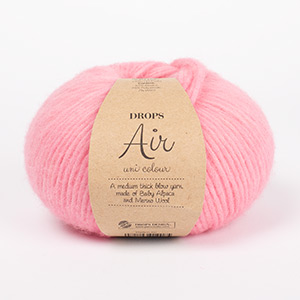






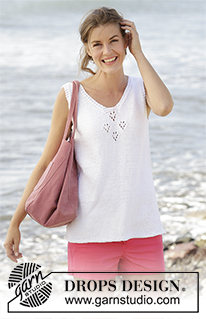

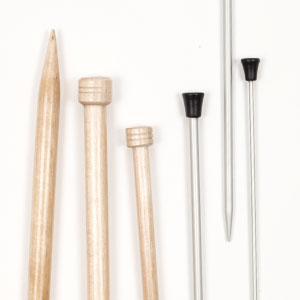



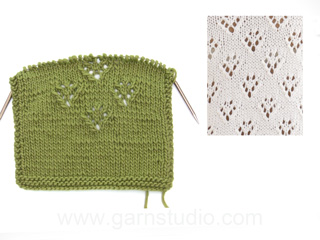
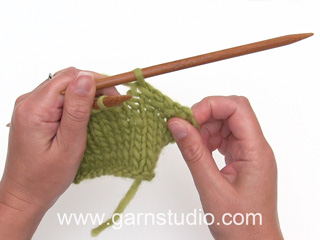

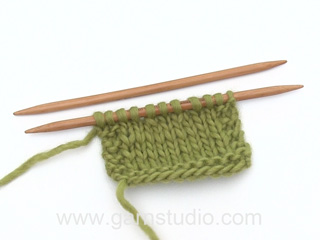
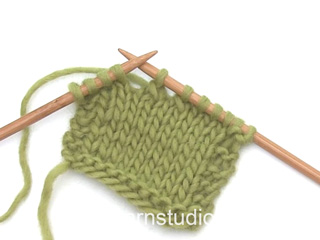


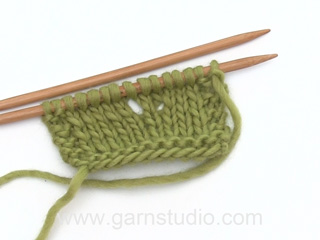

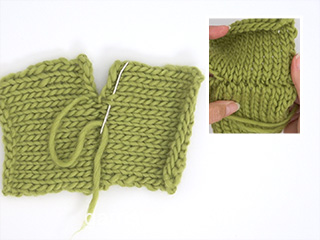
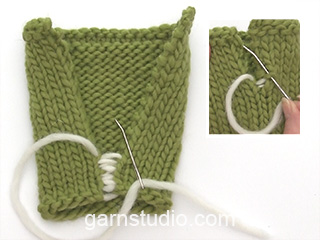
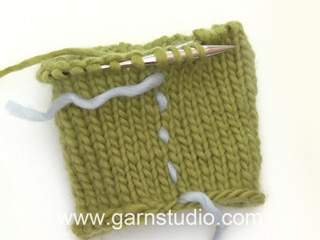
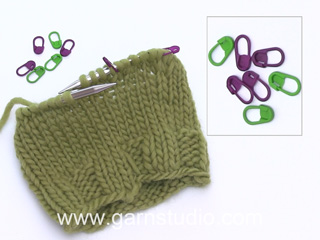
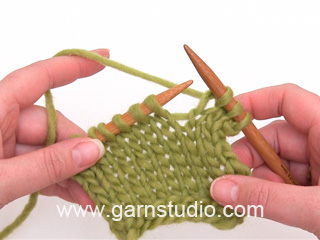
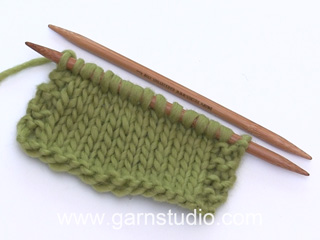
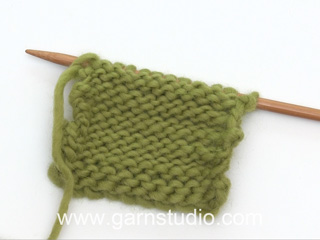
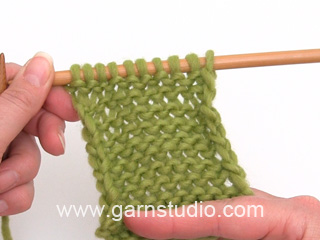
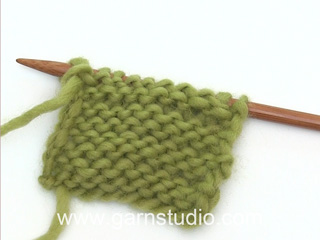
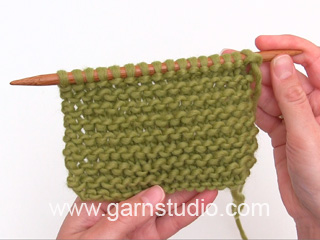
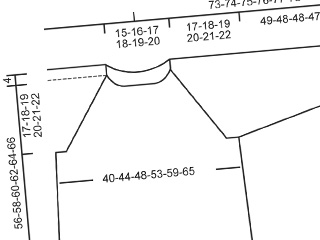
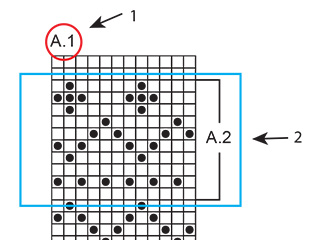
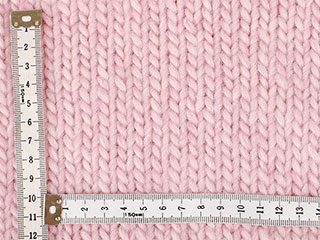
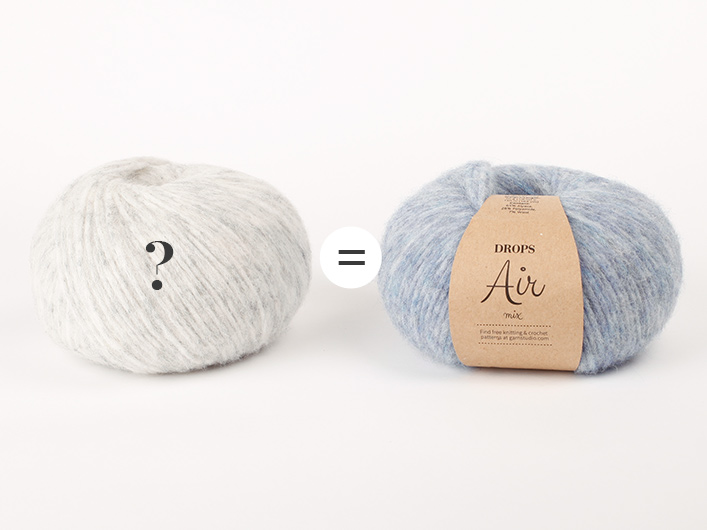

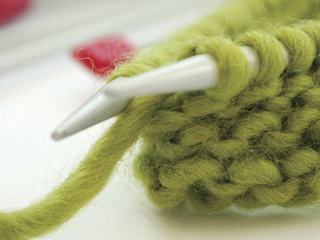
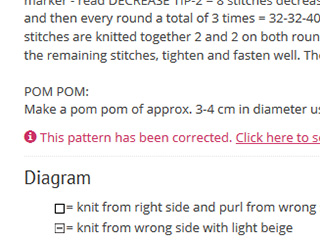
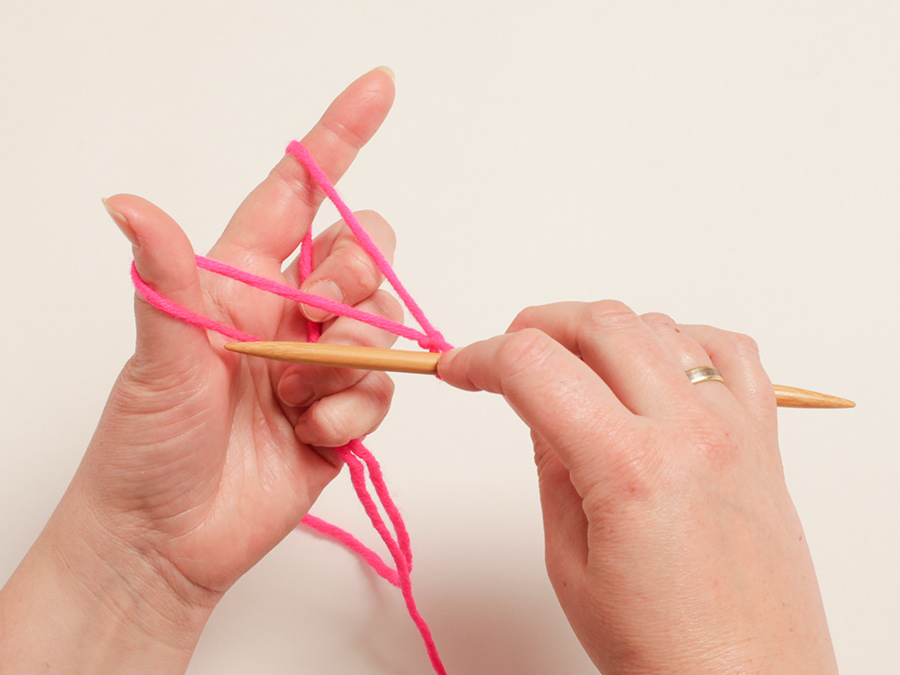
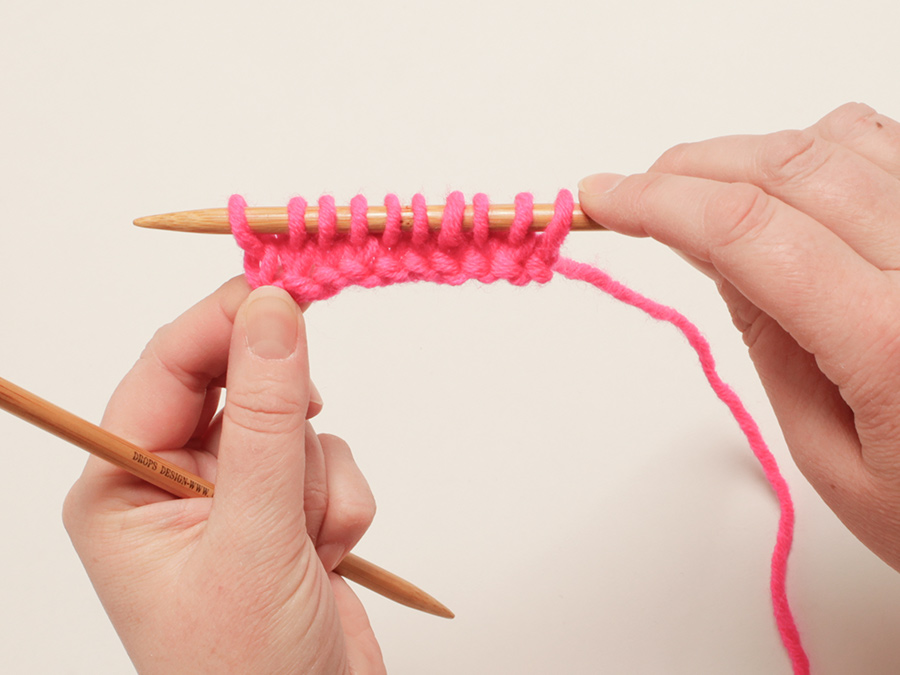

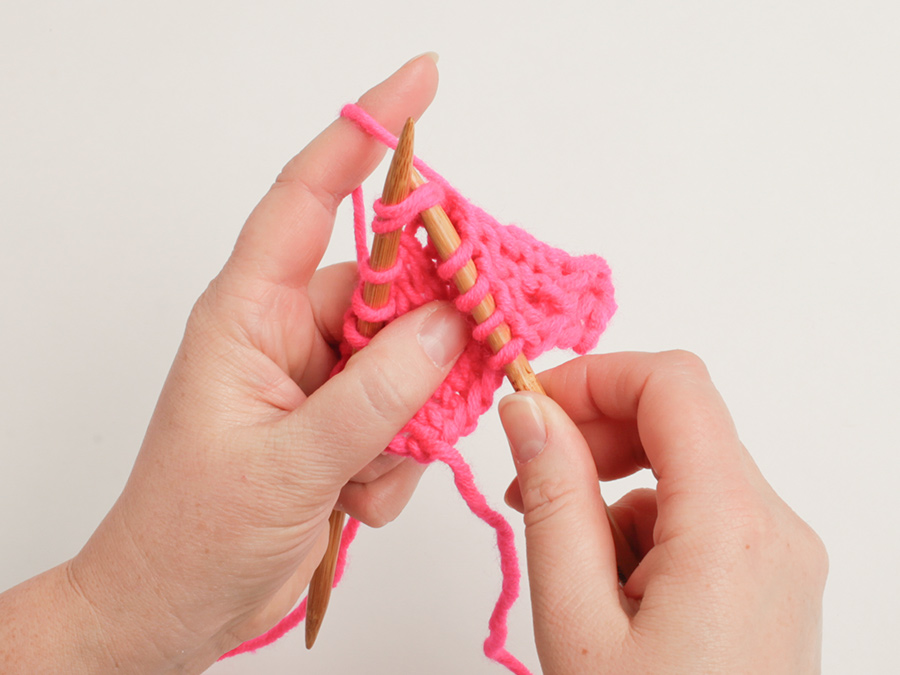
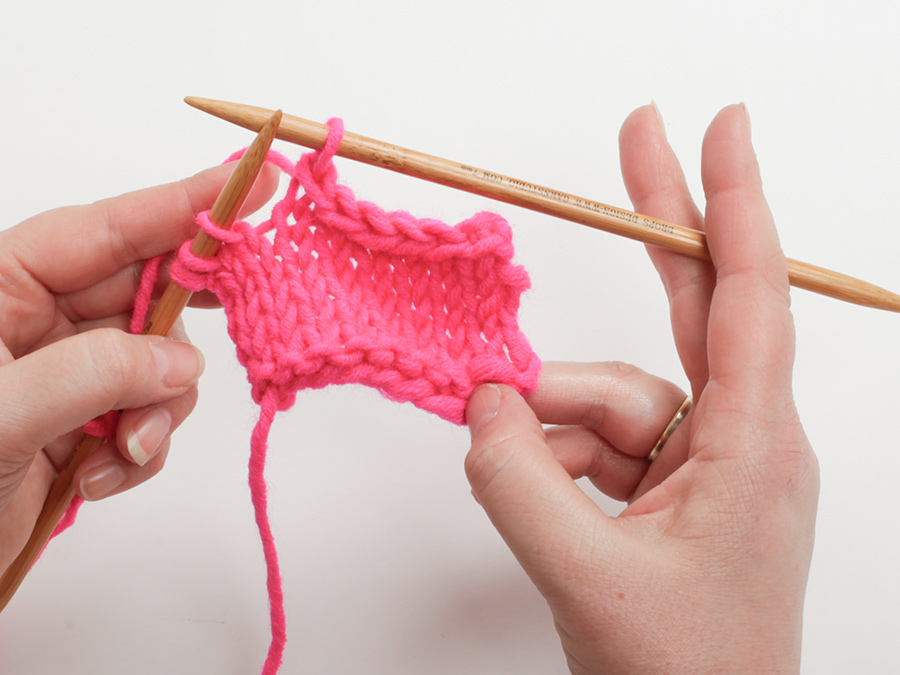

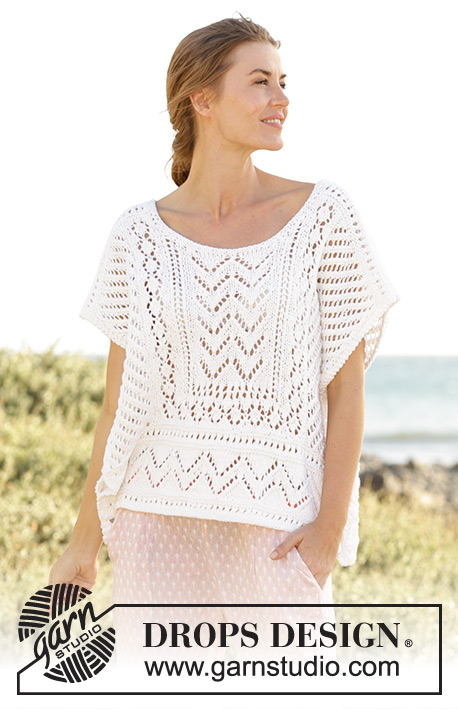
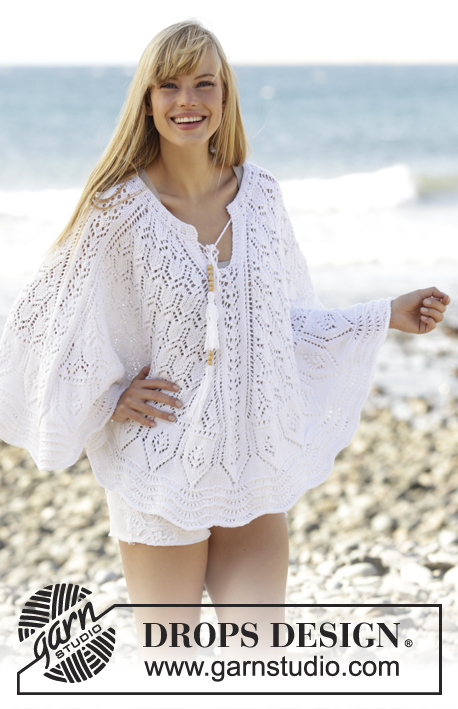

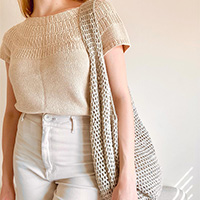


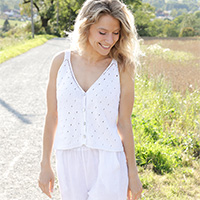
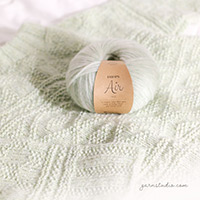
Comments / Questions (14)
Sunny Day Top I didn't understand the reply. So, there are 2 knit sts at the beginning and end of each row. WHERE DO I DO THE 6 BIND OFFS for armhole without crating a hole between the edge sts and the row sts?
13.07.2022 - 16:32DROPS Design answered:
Dear Irene, you cast off the 6 stitches at the beggining of each row as normal. In the following row, you work edge stitches in garter stitch which is usually slightly looser, so the gauge may get slightly looser and you may have a hole there. To avoid having a hole, you need to tighten the yarn between the start and end of the row, and adjust it well, i.e working the first 2 edge stitches more tightly. Happy knitting!
15.07.2022 - 12:47Sunny day top
10.07.2022 - 21:57How do you bind off for armhole while maintaining the garter stitches without creating a hole?
10.07.2022 - 21:56DROPS Design answered:
Hi Irene, You can work the first and last stitches together with the strand between them and the next stitch. Hope this helps and happy knitting!
11.07.2022 - 06:51On the Back piece size L: when starting the neckline, there are 63st on the needle. the neckline will be the centre 31 st, meaning there will be 16 st. on each shoulder strap. We are told to decrease 3x each side to get to 16 st, but I already only have 16 st. Do I just ignore the decrease instruction, or will that make my top look funny?
07.05.2022 - 04:55DROPS Design answered:
Dear Adelle, the 31 sts are those worked in garter stitch, but you cast off for the neckline 25 sts (as stated in the next line). Then, you decrease 1 st 3 times on each side, so you decrease 6 sts in total (31-25 = 6 sts). Then, you will have the 16 sts for each shoulder strap. Happy knitting!
08.05.2022 - 19:30Hej. Jeg forstår ikke hvordan man fortsætter diagrammet efter A1? Skal man selv bare lægge hjerter til?
27.02.2021 - 20:40Bonjour, Je souhaite réaliser ce modèle avec le fil de coton DROPS BELLE, aiguilles No 4. Hors, le fil préconisé pour sa réalisation est DROPS PARIS, aiguilles No 5. La taille est S, mais avec le fil DROPS BELLE au lieu de DROPS PARIS. Pouvez vous me dire quel est la taille adéquate à choisir ? La responsable d'une boutique m'a recommandé de suivre la taille L pour le nombre de maille et la taille S pour les centimètres. Merci pour votre réponse. Cdlt
27.05.2020 - 13:40DROPS Design answered:
Bonjour Mme Ribault, ce modèle est pour un fil du groupe C (Paris) or Belle appartient au groupe B, l'échantillon sera par conséquent différent et les explications ne correspondront effectivement pas. Nous ne sommes malheureusement pas en mesure de pouvoir adapter chacun de nos modèles à chaque demande; Vérifiez votre échantillon et recalculez d'après les mesures du schéma comment adapter à votre taille ou bien cherchez un autre modèle à tricoter en fil du groupe B comme belle. Bon tricot!
27.05.2020 - 14:10Czemu drukuje się jedynie pierwsza strona wzoru?(wszystkie parametry drukarki ustawione są prawidłowo)
12.06.2019 - 08:34DROPS Design answered:
Witaj Agato. Musisz kliknąć na ikonkę drukarki z napisem WZÓR (tuż nad opisem wzoru). Następnie DRUKUJ WZÓR w prawym górnym rogu okna, które się pojawi i jest cały wzór do wydruku. Jeśli nie zadziała, po prostu zaznacz opis, skopiuj do worda i wtedy drukuj. Powodzenia!
12.06.2019 - 16:40Salve vorrei sapere se continuare con le 2 m. di vivagno a legaccio per tutta la lunghezza del davanti e dietro, oppure se lavorarle solo per la parte dello spacco laterale che non viene cucito. Nel caso si debba fare x tutta la lunghezza, lasciare a vista il legaccio durante la cucitura? Grazie
29.03.2018 - 07:48DROPS Design answered:
Buongiorno Monica, è tutto spiegato nel modello, si lavora dall'alto in basso con 2 o 3 maglie di vivagno a seconda delle spiegazioni. E anche per la confezione, deve seguire le indicazioni e cucire il lato nel filo più esterno delle maglie di vivagno, quindi le maglie di vivagno rimangono a vista. Buon lavoro!
29.03.2018 - 09:34Bonjour, je tricote le dos et je ai terminé le diagramme A1. VOUS dites de faire les diagraMmes A1a et A1b à droite et à gauche . Je ne comprends pas où les commencer et comment faire la suite des motifs au milieu Merci de me répondre
12.05.2017 - 14:01DROPS Design answered:
Bonjour Agnès, Quand A.1 est terminé 1 fois en hauteur, continuez A.1 comme avant, c'est-à-dire que vous aurez 5 motifs ajourés en largeur au prochain rang et ainsi de suite (6, 7 ... ) - en fonction de votre taille, vous devrez tricoter A.1A au début du rang et A.1B à la fin du rang (si vous n'avez pas suffisamment de mailles pour faire des motifs complets en largeur). Bon tricot!
12.05.2017 - 15:38Hallo habe gerade mit dem Rückenteil angefangen und eine Frage zum Mister A1: In der Anleitung steht dass das Muster nach dem Markierer beginnt...heißt also dass ich den ersten Umschlag nach dem Markierer mache oder? Irgendetwas stimmt da bei mir aber nicht da ich irgendwann mit den Löchern nicht mehr symmetrisch bin und es kein Herz mehr ergibt?! Der Markierer sollte aber doch die ganze Zeit einfach nur mitgeführt werden oder?
11.09.2016 - 15:23DROPS Design answered:
Liebe Carolin, ja genau, der 1. Umschlag muss gerade nach dem Markierer sein, und dann wie im Diagram weiterstricken. Siehe auch das Video zum Diagram (am 3. Reihe mit Herze bekommen Sie mehr Herzen als im Video, da Sie mehr Maschen haben).
12.09.2016 - 09:23